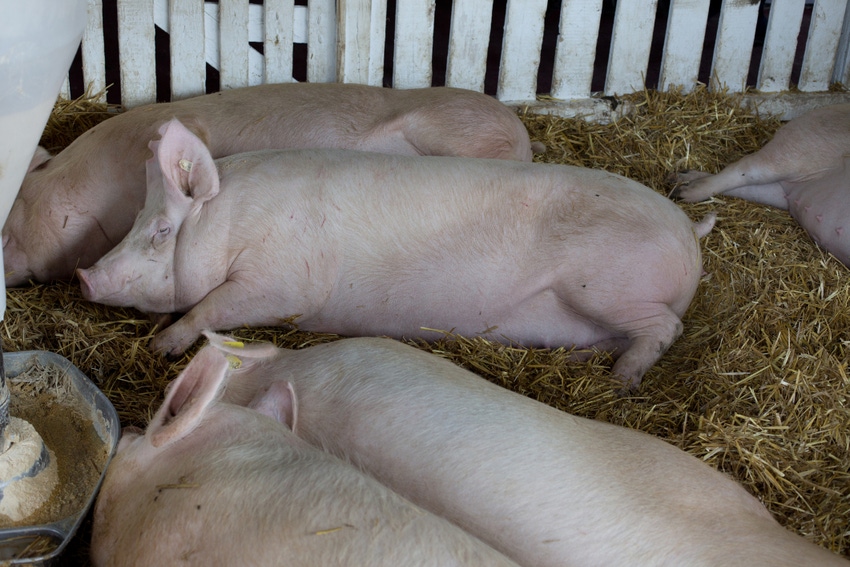Reduced mineral digestibility may affect sow longevity
Gestating sows may not digest calcium or phosphorus as well as growing pigs.
September 5, 2018

Most digestibility values for calcium and phosphorus are determined using growing pigs, with the long-held assumption that results can be applied to other swine at different life stages, including gestating and lactating sows. However, research is showing that sows may not absorb certain nutrients in the same way as growing pigs, according to the University of Illinois.
In a study published in the Canadian Journal of Animal Sciences, University of Illinois researchers revealed that gestating sows have reduced digestibility of calcium and phosphorus compared with growing pigs.
“The significance is that there are a lot of sows that are lost from commercial herds because of lameness, which can be related to calcium and phosphorus because they are the two most common minerals in bone,” said Hans H. Stein, professor in the University of Illinois department of animal sciences and corresponding author on the study. “These results may have implications for longevity of sows in the herd. We need to do more work before we can conclude that, but this study was the first step in that direction.”
Stein and fellow University of Illinois researchers Su A. Lee and Gloria A. Casas fed three diets to 48 gestating sows and 24 growing gilts. The three diets included a standard corn/soybean meal diet, a diet with 60% corn/soybean meal and 40% full-fat rice bran (FFRB) and a diet with 60% corn/soybean meal and 40% defatted rice bran (DFRB).
In the basal diet, 1.15% dicalcium phosphate and 0.8% limestone were included, whereas only 1.64% limestone was included in the diets containing FFRB or DFRB, the announcement said. Analyzed calcium and phosphorus in the three diets totaled 0.65% and 0.60%, respectively, in the standard diet, 0.66% and 0.98% in the FFRB diet and 1.16% and 1.09% in the DFRB diet. Microbial phytase was included in all diets, with analyzed values between 430 and 690 phytase units per kilogram of complete diet.
Because growing pigs are fed ad libitum but gestating sows are feed-restricted, Stein said it can be difficult to determine if nutrient digestibility differences are real or an artifact of feed intake. Therefore, sows were fed all three diets at 1.5 or 3.5 times the maintenance requirement for energy, and gilts were fed at 3.5 times the maintenance requirement.
Feed intake level did not affect the apparent total tract digestibility (ATTD) of calcium or phosphorus in gestating sows, but ATTD of both minerals was reduced in sows compared with growing gilts, the researchers reported.
“Phytate is a compound in cereal grains that binds phosphorus and calcium,” Stein explained. “We wanted to determine if there was a difference between high and low phytate in the two groups. Growing pigs were exactly as we expected: High-phytate diets had lower digestibility than low-phytate diets, but there wasn’t really a difference for sows between the low- and high-phytate diets. For both, digestibility values were much lower than what we saw in growing pigs.”
The study is the first to show a difference in digestibility of calcium and phosphorus in sows and growing pigs. Stein said he plans to determine why the difference exists and if it holds true throughout the entirety of gestation and into the lactation phase. Still, these initial results indicate that it may not be appropriate to apply results from growing pigs to gestating sows.
“It is possible that, in the future, we will need to use different digestibility values for calcium and phosphorus when we formulate diets for sows than we use for growing pigs,” Stein said. “This could improve accuracy of diet formulation, but we need more research before we can give recommendations on this.”
You May Also Like


.png?width=300&auto=webp&quality=80&disable=upscale)
